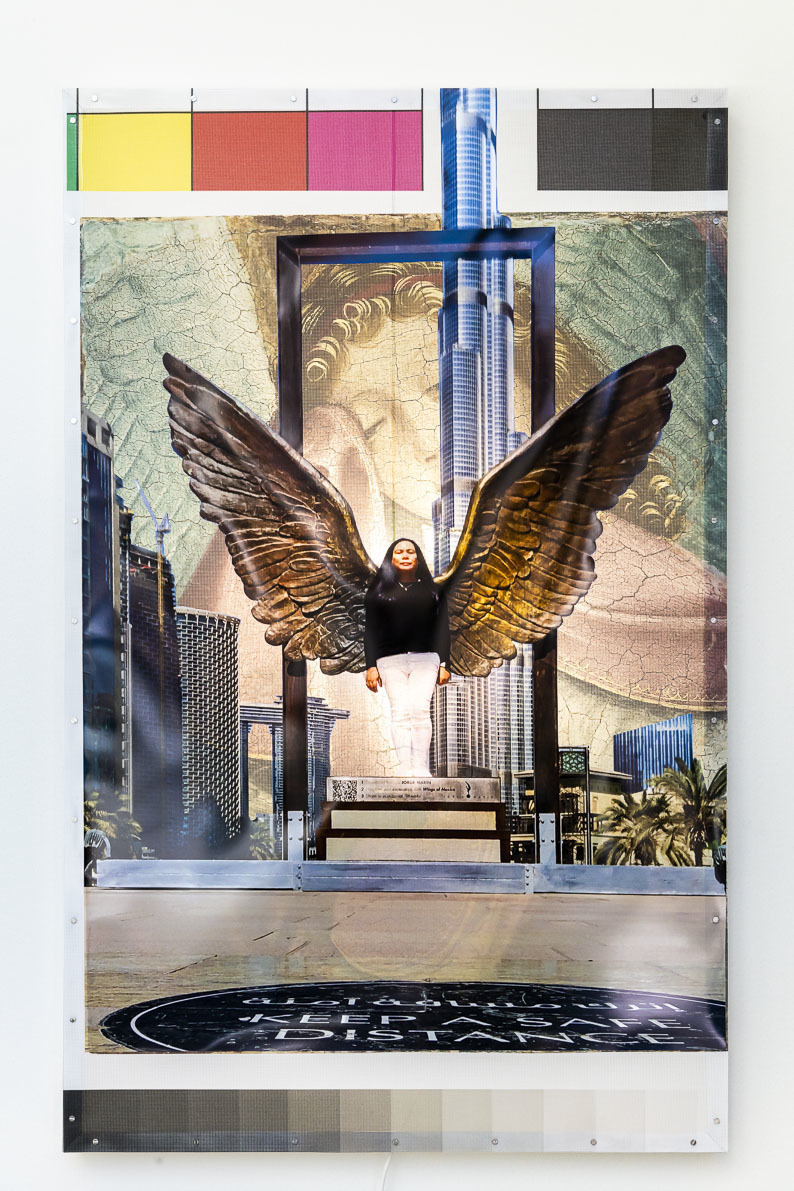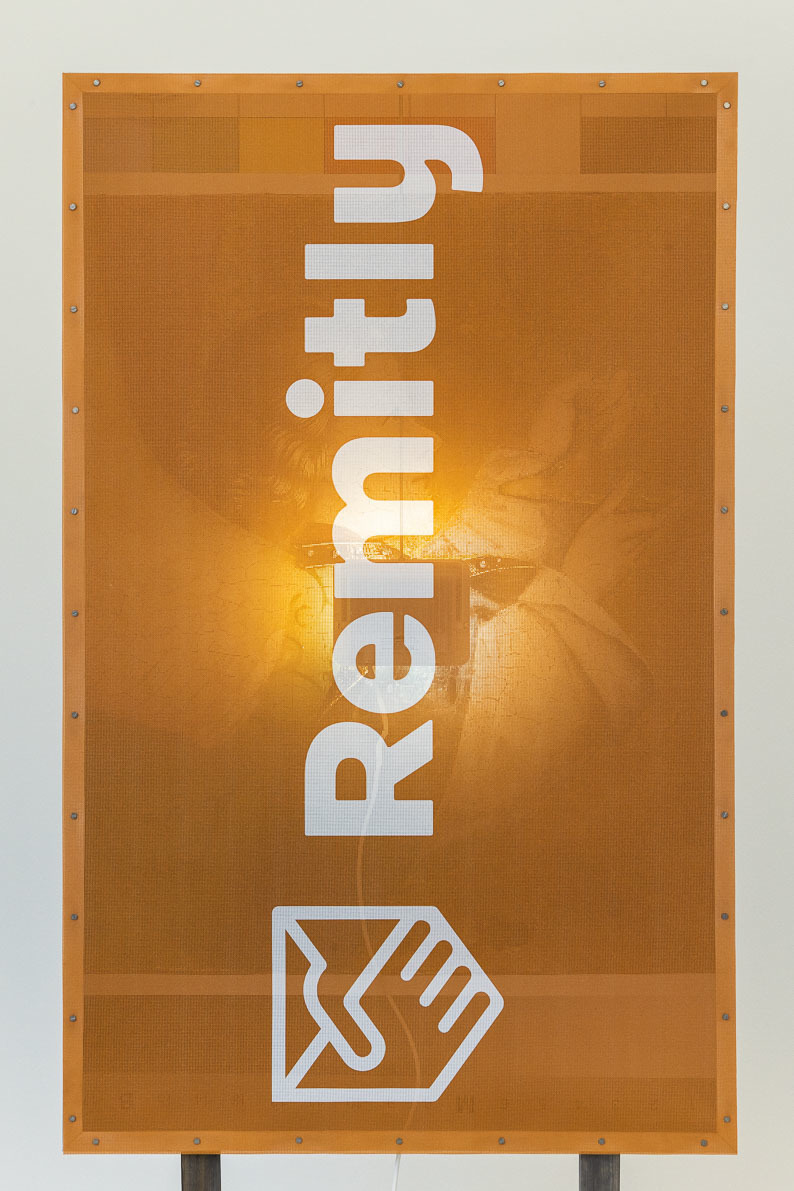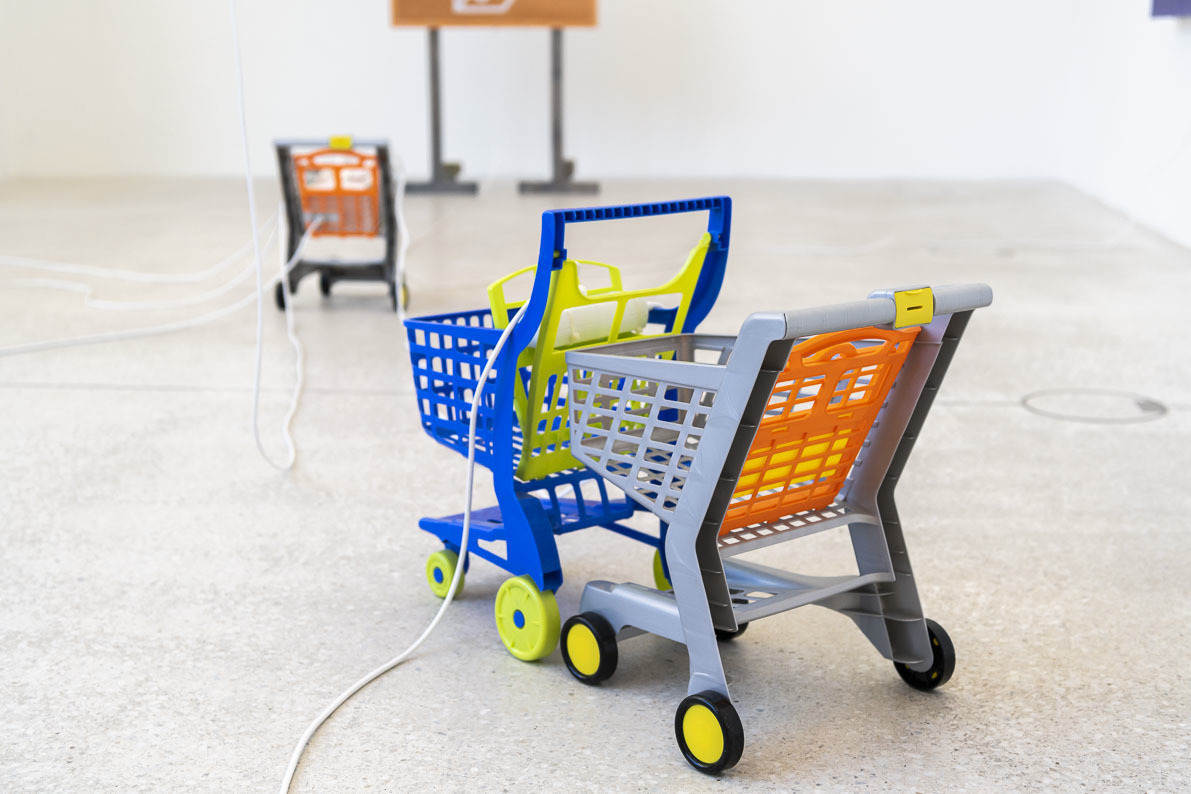Archive
2021
KubaParis
Unschuldsengel









Location
Projektraum von Westfälischem Kunstverein und LWL-Museum für Kunst und KulturDate
29.04 –13.05.2021Curator
Marie Sophie BeckmannPhotography
Thorsten ArendtSubheadline
"Unschuldsengel" is the first installment of "Epilog", a series of solo exhibitions by the Residence NRW⁺ fellows 2020/21.Text
Spot on. Senorita Latifa Sharifah with angel wings in front of–and inside–the Burj Khalifa in Dubai. Facades, columns, steel, concrete, glass. Architectures of power, in which the ideology of national grandeur, or alternatively the belief in a great idea, be it capitalism or socialism, manifests itself. Viewing platforms allow the view from above instead of below, the city becomes an experience, the overview becomes a commodity. Behind the window frames: even more angels of (Un)Schuld (meaning both innocent and free of guilt and their respective opposites) but from other times. Corporate identities, one hand holding the other. Western Union and Remitly, send money online fast.
What we see in Jasmin Werner's works are smartphone images, logos of money transfer services, and excerpts from archival reproductions of 15th-century paintings from larger sacred representation contexts, donated to the Westfälischer Kunstverein and given on permanent loan to the LWL Museum of Art and Culture, where they are shown in the current collection presentation. A kind of transfer business between those two institutions that the project space connects as an in-between space. The lamenting, mourning, praying angels are fragments from the high altar of the Benedictine monastery Liesborn. As "still usable fragments," they were sawed out when the rest of the altar was accidentally defiled, according to the museum's inventory catalog. The four angel fragments are therefore still of value–not least as exhibits and clues for an elaborate reconstruction of the altar, in which various experts, institutions and collections participated.
Printed on protective netting and fixed to aluminum frames, the angels, architectures, and lettering are superimposed to form montages and interconnected on an image surface. Together, the frames hanging from the ceiling and the wall or standing in the room facing the window front of the project space result in an arrangement that in its provisional materiality is also reminiscent of montage: something is (re)built and (re)constructed, something is in the process of being created. Possibly not permanent, but there for the moment, as a sign of promise. Like tarpaulins on a construction site scaffolding, printed with images of a not yet existing–or entirely imaginary–building facade.
Even without knowing the respective history of the pictures in detail,* the suggested connections become perceptible. The image montages create an associative reference system of transfer and circulation: it is about exchange and displacement of both signs and their cultural value and meaning as well as power and morality, guilt and debt. For the question of debt is never only one of money, but at the same time a political one and closely interwoven with–religiously influenced–notions of morality. Particularly in the Middle Ages, the merging of the forming world religions and trade markets produces a logic and rhetoric of debt that has changed little to this day. When we speak of dependence and freedom, forgiveness and sin, the true and the false in our global capitalist economic and social system, it still boils down to the millennia-old question: Who owes what to whom?
*Senorita Latifa Sharifah is the social media alias of Jasmin Werner's cousin who lives and works in Dubai. Just like many other migrants from the Philippines, she regularly sends money to her family back home–and thus ultimately supports the entire infrastructure of the country. She poses in front of, or rather inside, the Burj Khalifa in Dubai, the world's tallest tower at 828 meters, for whose construction steel from Berlin's Palast der Republik was also used. Where the former GDR building was demolished in 2005, the Humboldt Forum is now being built as a reconstruction of the baroque Berlin Palace.
Marie Sophie Beckmann